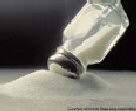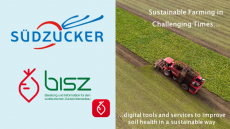Sonneveld responds to Dutch salt cap on bread

The Dutch government has introduced legislation to enter force on 1 January 2013 that will set the maximum salt content in bread from 1.8% to 1.5%.
The legislation applies only to bread-based products, such as loaves, buns and fruit bread and is not applicable to all baked goods.
Though similar initiatives are on-going in the UK and Belgium, the cap in the Netherlands will be lowest in Europe.
Replacing salt ‘impossible’
Netherlands-based ingredients firm Sonneveld outlined in its recently published Sustainability Strategy that it would respond by taking measures to reduce salt in dough.
Sonneveld R&D director Peeter Weegels spoke to BakeryAndSnacks.com about these steps and some potential challenges.
“Salt is a unique molecule that fits into the taste buds and replacing it is intrinsically impossible,” he said.
Consumer acceptability is therefore a huge challenge when looking at ways to reduce salt-content.
First step
He explained that Sonneveld had begun its salt reduction strategy in 2008 with the launch of salt reduction ingredient Proson Taste.
Salt levels were cut from 2% to 1.8%, he said, by using cross modal interaction, which increased the aroma of the product.
“Fooling the consumer by salt reduction while increasing the aroma to created a better tasting bread," said Weegels.
Next step
Sonneveld now aims to reduce salt in bread a further 0.2% by the end of this year in response to the Dutch legislation.
Weegels claimed his company could already go to 1% on flour bread using a Dutch bread process, and ran industrial bread processes around the 1.5% level.
He said the next stage would be to combine aroma enhancement with the use of enzymes to aggregate gluten to be less sticky in much the same way as salt.
“Stickiness can be a serious problem. Reducing salt is not helping this,” he said.
Costs for manufacturers
According to Weegels: “Salt is the cheapest raw material in the bakery area.”
Thus, simply replacing salt with flour would be more expensive, and would not produce an acceptable product. Therefore some additional cost is required, he said.
He put the additional cost at 0.02% per product if salt were replaced with flour.
“If you produce a lot of bread, this comes to quite some money. Taken together in a company, it comes to tens of thousands of euros,” he said.
In Sonnvelds view it shows Corporate Social Responsibility if a company coversthese costs themselves, as they did in their salt containing products.





















